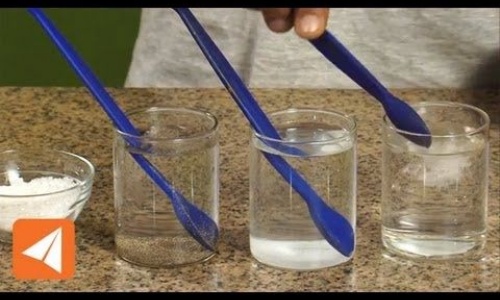Y5 science home learning 11.5.20

LO: To plan and carry out investigations into soluble materials
A new and exciting science topic begins this week! Warning: It could be messy! Please check with the adults in your house before experimenting wildly with the contents of the cupboards!
Our knowledge learning objectives are to:
- Compare and group together everyday materials on the basis of their properties, including their solubility and response to magnets.
2. Understand and explain why some materials will dissolve in liquid to form a solution.
In addition, with your science hats on, you will be developing your scientific skills by working and thinking like a scientist:
- Planning different types of scientific enquiries to answer questions.
2.Showing what you have found out (data/results) using scientific diagrams and labels, tables and line graphs.
3. Use results to make predictions to set up further fair tests.
4. Begin to write up conclusions (what you have found out from your tests).
Session 1 - Are all materials soluble in water?
The 'home learning' attachment will provide links to a couple of clips to refresh your knowledge and I also attach a fun cornflour activity (kitchen science attachment) for those of you wanting to have a go. Also please look at and use the fair test prompt sheet when planning your investigation. Either copy and edit it on your PC or create your own based on mine.
1) Watch videos - see attachment.
2) Write your own definitions of soluble, insoluble, solution, solvent.
3) Use fair test prompt sheet. What materials will you use - here are some ideas, but you may use others or what you have around your home/garden:
sand, soil, coffee, sugar, cornflour, crushed biscuit, flour, oil, cocoa powder, ready brek or similar, baking powder, icing sugar... Choose at least 5 to compare. Do more if you choose.
4) Make and write your prediction. Which do you think will be soluble/ insoluble/ partially soluble?
5) Carry out your test. Think carefully about making it FAIR - same, change, measure. (How much water, how long will you stir, how much of the material you are testing etc...)
6) Take photos to show your findings. Record your results in a simple table.
7) Write a simple conclusion. What is the answer to the original question? (Are all materials soluble in water?)
8) Extra: How could you further your investigation? What else could you try to be sure of your results?
